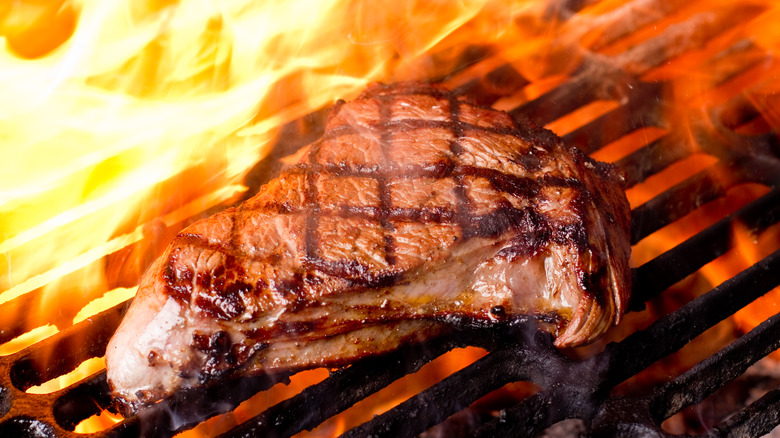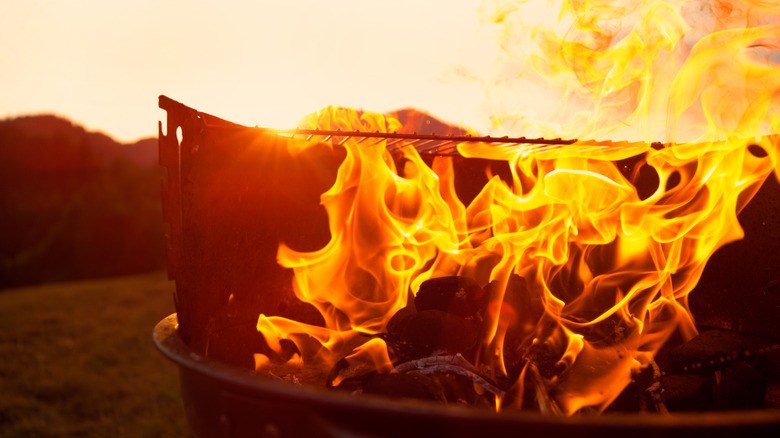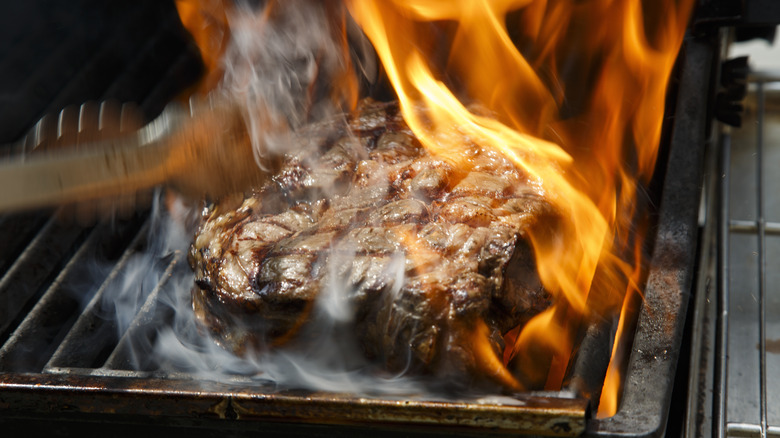The Grilling Mistake That Makes Your Meat Taste Like Ash
What makes a flame-grilled steak great? For many, a well-executed steak has a crispy outer crust with mouthwatering grill marks crisscrossing its juicy surface. On the inside, the meat should be cooked to the ideal doneness — a rosy hue for medium-rare or a more caramel tone for those who prefer their steaks cooked to medium-well. Most importantly, the taste should be an enticing blend of beefy flavors.
However, for those firing up the grill for the first time, steaks sometimes fall short. Instead of having a melt-in-your-mouth texture and a delicious flavor combo, the pricey cuts of meat just taste burnt and ashy — almost as if they were dragged over hot coals rather than grilled over controlled heat. What happened here?
Well, the likeliest answer is that you might've cooked the steak over too much flame. Yes, that's a thing! And there are many of potential reasons for it, ranging from improper grilling techniques to problems with the grill itself. Fortunately, with some practice, you can keep that burnt taste away from your steaks.
Soot and ash kill flavor
Every grill produces soot and ash in different amounts. That's why scrubbing inky black stains is something every grill owner can relate to, whether you use a propane, gas, or charcoal grill. When a flare-up (a burst of flame from the grill) happens, there's also a lot of soot being released. This plume of soot and ash can shoot directly at your food, coating it with a thin layer of carbon and fuel residue. This nasty layer is what gives your grilled steak that unpleasant, burnt taste.
Flare-ups can happen for many different reasons. If you use a charcoal grill, fat dripping onto the hot briquettes can cause them. Fat can also cause gas or propane-fueled burners to flare, but there are other culprits that you may have to look out for, too. For instance, if the burner is faulty, it can cause the fire to spark higher than it should. The same thing goes for a bad regulator. Both of these can be dangerous, so if you think your burner or regulator isn't working right, shut off the grill and check on it before continuing to use it.
How much flame is too much?
Any major flare-up that produces enough flame to totally engulf the steak and release enough heat to make you recoil is too much flame. However, small flare-ups (where the flame just "blooms" a bit but otherwise doesn't reach high enough to touch the food) can happen sometimes, but they're no cause for concern.
If you experience a major flare-up, your number one priority is to get it under control as soon as possible. If you find it's because of dripping fat on the burner or charcoal, move the meat off of the heating element. If you have a two-zone fire going, move it to the cool side. Alternatively, just transfer it to a plate to cook later when the flare-up is under control. If the fire's too hot, slam the lid shut! This will starve the fire of oxygen and slowly reduce its intensity. The food may not be salvageable, but at least your eyebrows won't be singed.
For gas or propane grill users, if you also notice the burner making noises or the flames flickering erratically in addition to flare-ups, shut off the grill. These are signs that something is wrong with the grill that should be fixed before you continue cooking with it. Once you've "mastered the flame," you can say goodbye to ever having to taste ashy steak again!


